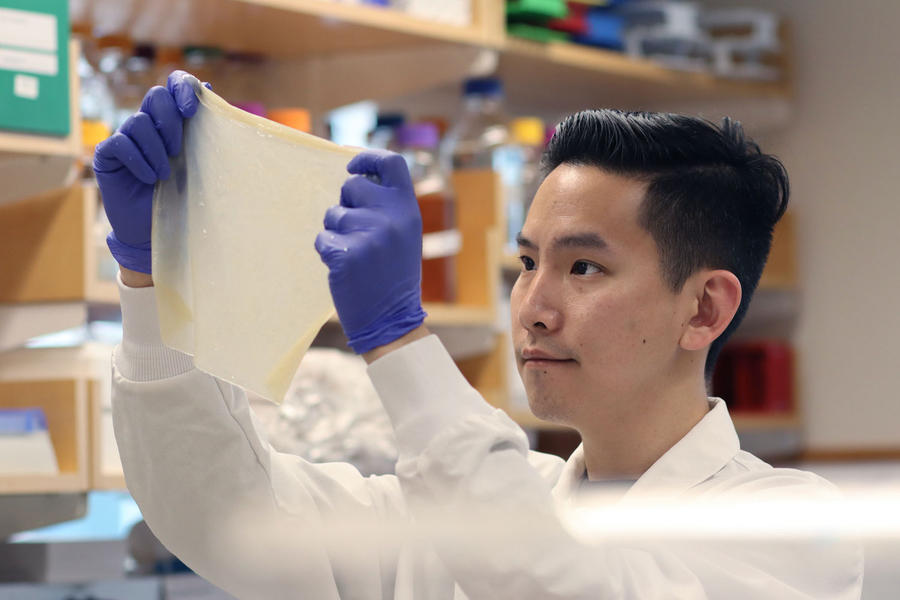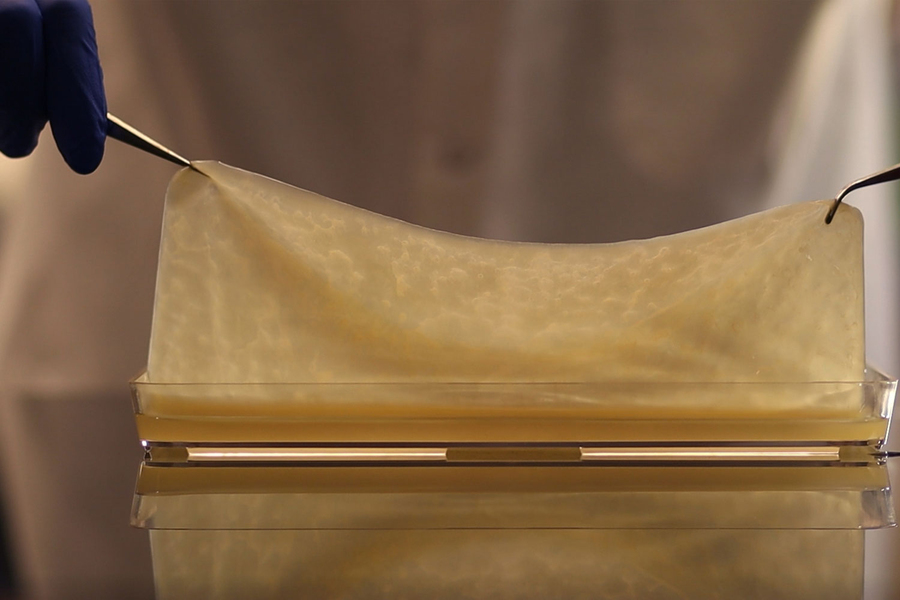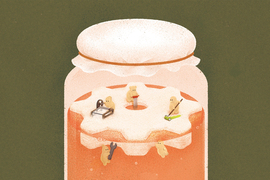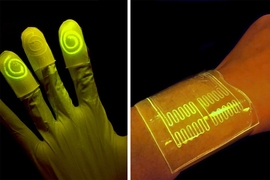Like many of his colleagues in the Department of Biological Engineering, graduate student Tzu-Chieh “Zijay” Tang employs microbes and synthetic biology — redesigning the genetic systems of organisms — in his research. However, his research goals are something of an outlier in his department: water quality applications.
“I feel like there’s a huge imbalance of talent, at least at MIT,” says Tang, a fifth-year doctoral student. “A lot of people go into the biomedical field, and very few take on environmental issues.” To him, problems like climate change or food and water security are the most pressing challenges, and present great opportunities for students in biological engineering to make a difference. While interested in the environment and inspired by the natural world since a young age, he came to appreciate these issues even more, he says, as a result of his experience in 2017 as one of three inaugural fellows through the Fellowship for Water Solutions program at the MIT Abdul Latif Jameel Water and Food Systems Lab (J-WAFS). He points to J-WAFS as a key contributor to raising the profile of environmental research on campus and shifting the imbalance: “J-WAFS really has a vision of a sustainable future, and has been the best supporter of our research — and of me personally, as a researcher.”
When Tang first came to MIT after studying materials science as a master’s student in Abu Dhabi, he joined the Mediated Matter group in the Media Lab. He was excited by the prospect of bioengineering novel materials under the principal investigator, Associate Professor Neri Oxman, “an amazing designer with great visions about how to make materials inspired by nature.” But after a few months, he realized that innovation in biological research, which occurs on a time frame of months to years, can’t keep pace with design deadlines, which tend to be on the order of weeks. Oxman’s group generally worked with fully developed bioengineered systems. Tang, however, preferred to innovate on the fundamental biology itself, and moved to the synthetic biology group of Tim Lu, associate professor of biological engineering and electrical engineering and computer science. Not one to limit his playing field, Tang still chats with Media Lab researchers to glean inspiration.
And Tang’s collaborative spirit extends far afield. A MISTI Seed Grant and a summer at Imperial College London grew into a cross-Atlantic effort to develop living membranes with microbes, in a process inspired by the fermented beverage kombucha. Sweet tea is turned into acidic, fizzy kombucha by a symbiotic culture of bacteria and yeast (SCOBY), which exists in a gelatinous biofilm composed largely of cellulose produced by the bacteria themselves.
The system is self-assembling and requires only a cheap sugar-based solution to maintain, properties that greatly appealed to Tang and his collaborators. Working from the kombucha principle, they developed Syn-SCOBY: a sturdy, cellulose-based biofilm created by and encapsulating a co-culture of engineered microbes. One version of the Syn-SCOBY contained yeast that could detect and degrade the environmental pollutant β-estradiol, but the team emphasized that the modularity of the system meant that it could be customized to target a wide variety of applications.
“People in the lab came to me asking if I could incorporate peptides [amino acid chains] that can bind coronavirus particles into the Syn-SCOBY material,” Tang recalls. “I think this could probably be done quite quickly. That’s why I think developing platform technologies is so useful: you can adapt to different emergencies.” While Tang is well-versed in developing biological materials to address water contamination, it’s in pathogen detection where biosensors have an even greater edge over other more established measurement technology, he says. And while mass spectrometers can detect chemical pollutants reliably, if not necessarily cheaply or in the field, optimizing them to measure biological particles such as viruses has thus far proved difficult.
Tang has already achieved recognition for his research accomplishments — he won a Lemelson-MIT Prize in the “Eat It!” category for his Syn-SCOBY filters. However, what he really wants is to see academic research translated to real applications. One big challenge is scalability, which Tang aims to avoid with his kombucha-inspired biomaterial. Syn-SCOBY is self-replicating, robust, and easy to make. Tang also hopes that the existence of thousands of kombucha homebrewers will make it easier to connect with the public and get them excited about this research.
Four years ago, Tang started developing biosensors in the form of bacteria-containing hydrogel beads. The bacteria are engineered to light up in the presence of water contaminants (he tested this with, among other samples, Charles River water). Formulating the hydrogel was a key aspect of the project: Tang needed the material to not only protect and feed the bacteria, but also to prevent the bacteria from leaking out. Tang continued iterating on his ideas during his J-WAFS fellowship, and has finished developing a bead formulation that not only meets his design requirements, but can be easily adapted to host different microbes.
With real-world applications of his inventions ever on his mind, Tang sought advice on use-case scenarios from industry experts, connections that were made possible through the fellowship’s funder, the international water technology company Xylem. For example, Tang gleaned from the company’s scientists which contaminants were actually of interest to industry, which helped him pick cadmium as a test of the beads’ potential real-world use. Furthermore, he learned that while the beads cannot report measurements as precisely as the gold standard of mass spectrometry, they are much cheaper and much more portable; at the same time, the beads are more precise than probes, which are the current go-to for preliminary testing.
Presently, Tang does not have plans to take his bacteria beads to market, but is nonetheless brainstorming ways to improve them: He sees a potential to increase the system’s sensitivity by incorporating new microbe engineering methods developed in the lab of MIT biological engineering Professor Christopher Voigt. As for Syn-SCOBY, Tang says he might explore the technology’s startup potential through the Blueprint entrepreneurship program offered by The Engine, the startup incubator founded by MIT.
Tang is also contemplating expanding beyond the field of biosensors after graduating in the fall. He feels a strong impetus toward climate change research, especially in advancing carbon removal technology. It’s another area where he sees a yawning gap between academia and application, as well as a long way to go in terms of scalability. In this regard, Tang says the ability of biological systems to self-propagate gives them an advantage over mechanical methods of carbon capture. But he cautions that this same self-propagation makes strict biocontainment of any engineered organisms a vital aspect of any system that is deployed — an aspect that Tang took pains to guarantee in his Syn-SCOBY and microbial hydrogel systems, and an aspect that he will continue to push for in his future work.




![“If you have a problem, and you look into the problem in nature and see how animals or plants deal with these kinds of problems and extract those design principles, you can try to replicate [them] using engineering approaches,” saysZijay Tang, a PhD candidate in MIT’s Department of Biological Engineering.](/sites/default/files/styles/news_article__archive/public/images/201809/MIT-Tang-01.jpg?itok=VpzYbavZ)






